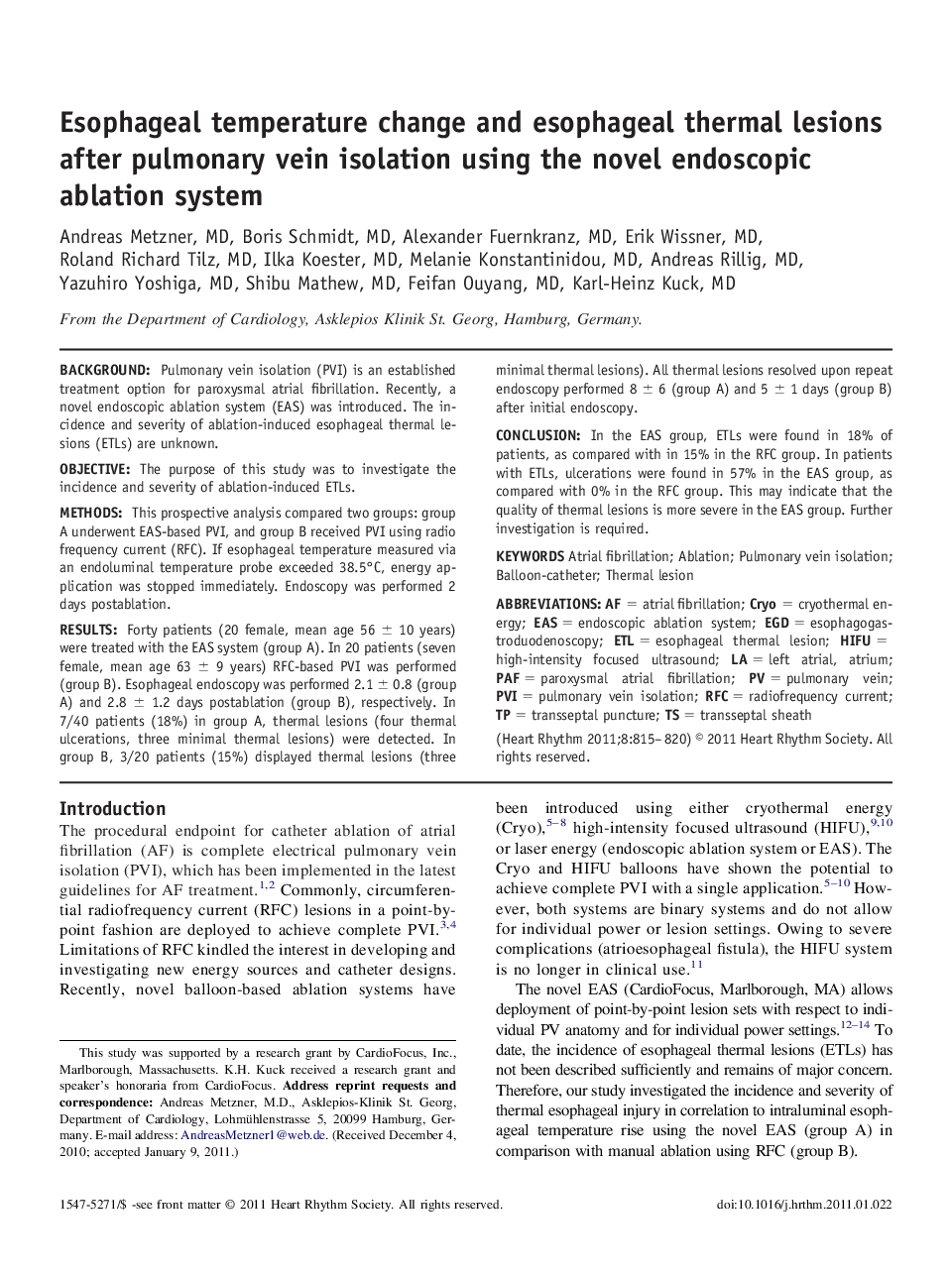| Article ID | Journal | Published Year | Pages | File Type |
|---|---|---|---|---|
| 2922976 | Heart Rhythm | 2011 | 6 Pages |
BackgroundPulmonary vein isolation (PVI) is an established treatment option for paroxysmal atrial fibrillation. Recently, a novel endoscopic ablation system (EAS) was introduced. The incidence and severity of ablation-induced esophageal thermal lesions (ETLs) are unknown.ObjectiveThe purpose of this study was to investigate the incidence and severity of ablation-induced ETLs.MethodsThis prospective analysis compared two groups: group A underwent EAS-based PVI, and group B received PVI using radio frequency current (RFC). If esophageal temperature measured via an endoluminal temperature probe exceeded 38.5°C, energy application was stopped immediately. Endoscopy was performed 2 days postablation.ResultsForty patients (20 female, mean age 56 ± 10 years) were treated with the EAS system (group A). In 20 patients (seven female, mean age 63 ± 9 years) RFC-based PVI was performed (group B). Esophageal endoscopy was performed 2.1 ± 0.8 (group A) and 2.8 ± 1.2 days postablation (group B), respectively. In 7/40 patients (18%) in group A, thermal lesions (four thermal ulcerations, three minimal thermal lesions) were detected. In group B, 3/20 patients (15%) displayed thermal lesions (three minimal thermal lesions). All thermal lesions resolved upon repeat endoscopy performed 8 ± 6 (group A) and 5 ± 1 days (group B) after initial endoscopy.ConclusionIn the EAS group, ETLs were found in 18% of patients, as compared with in 15% in the RFC group. In patients with ETLs, ulcerations were found in 57% in the EAS group, as compared with 0% in the RFC group. This may indicate that the quality of thermal lesions is more severe in the EAS group. Further investigation is required.
